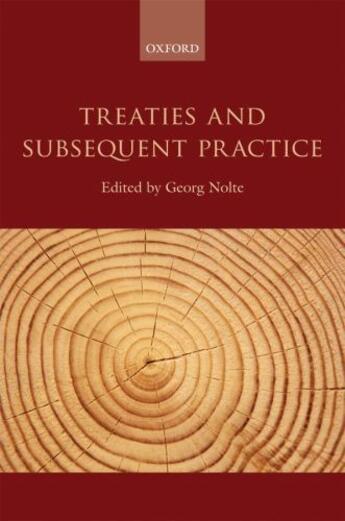-
Nombre de pages : (-)
-
Collection :
(-)
-
Genre :
(-)
-
Thème :
Non attribué
-
Prix littéraire(s) :
(-)
Résumé:
Under the relevant rules of international law, treaties are interpreted in accordance with the ordinary meaning of the language they use, their object and purpose, and the intention of the drafters, but also in light of the subsequent practice of its parties. This subsequent practice can shed... Voir plus
Under the relevant rules of international law, treaties are interpreted in accordance with the ordinary meaning of the language they use, their object and purpose, and the intention of the drafters, but also in light of the subsequent practice of its parties. This subsequent practice can shed light on articles whose meaning is ambiguous and subsequent agreement can even alter the meaning of treaty provisions. At a time when many of the most important international treaties are more than fifty years old, subsequent practice plays an increasingly important role in their interpretation.
Treaties and Subsequent Practice discusses the role and relevance of this subsequent practice in the process of dynamic treaty interpretation. The book provides a comprehensive treatment of this topic by eminent commentators, combining contributions which focus on practical cases with chapters examining the theoretical underpinnings of treaty interpretation. The concept of subsequent practice is situated in the more general context of treaty law and international law, looking at different cases and doctrinal questions to assess its policy dimensions. The book addresses the question of whether subsequent practice plays a more or less significant role in different areas of international law, and whether it can be employed as a partial substitute for formal treaty amendments. It also includes two previously unpublished reports issued by the International Law Commission's Study Group on this topic.
Donner votre avis















